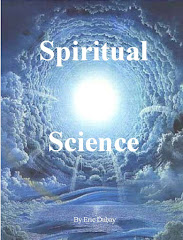Nowadays and for the past five centuries, since the introduction of the heliocentric globe deception, all world maps and explorers have depicted and described the North Pole and surrounding region as being nothing but an arbitrary point in a semi-frozen tundra. Previous to this however, depictions and descriptions of the North Pole and surrounding regions in world maps and ancient explorers' accounts were very different. Firstly, before the 16th century, the North Pole was never once shown or thought to be just some random, ambiguous point amidst a low salinity Arctic Ocean as it is now. Instead, the North Pole was universally described and depicted, from diverse cultures all across the Earth, as being a gigantic magnetic mountain situated directly below Polaris. The prevailing belief was that compass needles the world over were actually pointing to a huge "loadstone mountain" made of magnetite at the Pole; in contrast to today's prevailing belief that compass needles are pointing to some constantly moving magnetic field generated by hypothetical molten metal existing at the center of a fantastical globe-Earth. While neither claim can be confirmed or denied without independent exploration and experimentation, it should be noted that nowhere in nature can we find molten metal which retains any significant magnetic properties once heated past the "Curie Point," let alone create some convoluted constantly moving di-polar field as is claimed by proponents of the fantasy ball-Earth.

"In many traditions, the world mountain is identified symbolically with some local mountain. This is illustrated by Mount Olympus of the Greeks, Mount Alborz of the Iranians, and Mount Khun-Lun of the Chinese. In Near Eastern tradition, the world mountain is the small hill in Jerusalem known as Mount Zion. Thus the circular continent centered on Jerusalem in medieval maps also possessed a symbolic world mountain." -Richard L. Thompson, “The Cosmology of the Bhagavata Purana” (146)
“Jerusalem was Paul’s lodestone. The ancient mariners who set sail in their little cockleshell boats tended to hug the coastline, not daring to get too far from land. Aids to navigation were few, and their vessels were at the mercy of wind and wave. The slightest sign of a storm would send them scurrying for refuge. Moreover, the dreams of those old-time venturers were haunted by thoughts of the fabled, ‘lodestone mountain.’ They believed it had the power to draw their vessels to shipwreck on its shores against all the pull of tide and wind.” -John Phillips, “Exploring (the Book of) Acts” (402)
Isaiah wrote about a mountain, set above all other mountains, in the far recesses of the North where the gods meet called Mount Zion in Jerusalem. Genesis, Ezekiel and Enoch all mention a paradisiacal Eden, the mountain of God, and source of four main rivers. Genesis 2: 10-14 reads: “And a river went out of Eden to water the garden; and from thence it was parted, and became into four heads. The name of the first is Pison: that is which compasseth the whole land of Havilah, where there is gold; And the gold of that land is good: there is bdellium and the onyx stone. And the name of the second river is Gihon: the same is it that compasseth the whole land of Ethiopia. And the name of the third river is Hiddekel: that is it which goeth toward the east of Assyria. And the fourth river is Euphrates."
Mohammed also spoke of four rivers and a divine tree. In the Srimad Bhagavatam four branches of the celestial Ganges flow out from Brahmapuri on top of Mount Sumeru. In ancient Canaan, Guri’ili, the mountain of El, was the dwelling of El, the creator, and a place of assembly for the demi-gods. In one Phoenician ivory carving from around 1000 B.C., a deity is shown dressed to represent a mountain with four streams coming out from the mountain-god-man at right angles. Similarly, in an ancient Akkadian hymn to the goddess Ishtar, she is addressed as "the Queen of the Mountain of the World and Queen of the land of the four rivers of Erech," and she says, "I am lord of the steep mountains, which tremble whilst their summits reach to the firmament."
In the Christian apocryphal book of Enoch, Enoch is taken by angels on a tour of the seven heavens and while in the third heaven shown magnificent trees producing wonderful fruits with adjacent springs pumping honey, milk, oil and wine to four directional rivers flowing down into paradisiacal Eden, an abode specially prepared only for the pious and selfless. Similarly, in the Hindu cosmology, four trees in Ilavrta-varsa stand on great mountains producing rivers of nectar and honey, like fountains of youth, providing health and vitality to all who drink of them, while the central tallest "Jambu" tree rises to incredible heights and "seems to cover all the heavens."
"In the Bhagavata Purana Mount Sumeru is surrounded by four great mountains surmounted by four gigantic trees. These include the Jambu tree after which Jambudvipa is named. Four huge lakes of milk, honey, sugarcane juice and pure water are located between the four mountains, and these lakes confer mystic powers on the celestial beings who bathe in them. There are also four celestial gardens near these lakes. From the foot of each of the four trees, there flows a river that either emerges from the tree itself or from the fruits of the tree. These rivers of honey and different kinds of juice flow throughout the region of Ilavrta-varsa surrounding Mount Sumeru, and they confer freedom from fatigue, disease, and old age on the inhabitants of that region." -Richard L. Thompson, “The Cosmology of the Bhagavata Purana” (132)
The Yakut people of northeastern Siberia have their own strikingly similar ancient myth where a world tree of immeasurable age exists "at the navel of the Earth," just like the Hindu Jambu tree is "born of the umbilical knot of Brahma." The Yakut world tree reaches into the high heavens with cones nine fathoms long and sap which imparts youthfulness on all who consume it. Near the Yakut tree also lies a lake of sweet milk, which is where the popular modern Japanese milk company "Yakult" doubtless gets its inspiration.
"In different traditions, the upper and lower worlds may be divided into several levels (often seven or nine). In the center of the earth-disk there is a world mountain or world pillar that links middle earth to the lower and upper worlds. The world mountain represents the polar axis, and the dwellings of great demigods are located on its summit. The world mountain may be surrounded by other mountains that define the cardinal directions, and these directions may be associated with certain colors. Four sacred rivers may also flow from the world mountain in the four cardinal directions. There is a world tree that is often situated on the world mountain (or four world trees may be located on the neighboring directional mountains). The world tree extends from the earth to the heavens, and it is nearly immortal. It is the source of rivers of nectar or pure water that give health and longevity to those who drink them. The tree stands in an earthly paradise where there are celestial gardens and rivers of various substances, such as milk, oil, and honey. The tree or world pillar is often associated with a great eagle-like bird that is the enemy of great serpents dwelling in the lower world." -Richard L. Thompson, “The Cosmology of the Bhagavata Purana” (135)
In ancient Iranian thought, a mountain called "Hara Berezaiti," or "Albordj" stands at the center of the Earth, a fixed point around which the Sun, Moon, and stars revolve. At its summit lies the dwelling place of "Ormuzd" the lord of light, complete with a giant miraculous tree, an Edenic "garden of Ahuramazda," and the celestial fountain "Arduisur," which is the mother of all Earthly water and flows down towards four cardinal points into four large streams. The bridge "Tschinevad" reaches from the peak of Albordj to the solid vault of heaven, or "Gorodman," the home of the pious and blessed, whilst underneath lies the great gulf of Duzahk, the abysmal abode of the lord of darkness, "Ahriman."
The earliest cosmogony recorded by the Japanese in their most ancient book, the Koji-ki, once again mirrors this recurring mythology. In the beginning, Izanagi and Izanani, the great god and goddess standing in heaven drove a celestial spear into the endless sea and twisted it around until an island rose from the water. They then descended from heaven to Earth and built a palace around the huge spear using it as the central pillar. This spear became the central axis of the world and their palace the birthplace of the human race. In the Koji-ki and Shinto religion, the Creator and the North Pole are so purposely and inseparably linked that one of the often used names of God translates to: The Lord of the Center of Heaven. The "Ainos," supposed first inhabitants of Japan, whose name means "offspring of the centered," are believed to have arrived onto the archipelago "from the North," and bury their dead facing North to where their ancestors came and to which their spirits would return.
In Buddhist funeral ceremonies bodies are cremated in special crematoriums actually called "Meru" which are essentially tall stone pillars with four doors at the peak aligned to the cardinal directions, with the belief that our reincarnated souls will pass Mount Meru before returning to earthly bodies. Literally every temple and the little spirit house shrines found in most Buddhist homes are also representations of Meru, the abode of the gods, aligned to the four cardinal directions, and opulently embellished with gold, jewelry and metaphysical artwork.
"Koeppen assures us that 'every orthodoxly constructed Buddhist temple either is, or contains, a symbolical representation of the divine regions of Meru, and of the heaven of the gods, saints, and Buddha’s, rising above it.' Lillie says, 'The thirteen pyramidal layers at the top of every temple in Nepal represent the thirteen unchangeable heavens of Amitabha.' Faber develops the evidence of this practice among the ancients with great fullness, and with respect to the Hindus and Buddhists says, 'each pagoda, each pyramid, each montiform high-place is invariably esteemed to be a copy of the holy hill Meru.'" -Dr. William Warren, “Paradise Found: The Cradle of the Human Race at the North Pole” (229-30)
Ancient South American traditions also believed the human race was birthed in the farthest North, upon the highest of mountains, surrounded by perpetual clouds, fountainhead of the world's waters, and home of god Tlaloc, residing on their sacred paradise mountain Tlapallan. The first man, Quetzalcoatl, was said to have drank the water of immortality from Tlaloc's mountain and ruled as king throughout a golden age in Mexico. The many Incan, Mayan, Aztec and other step-pyramids and temples aligned to cardinal directions and devoted to the gods are representative of this world mountain. Interestingly enough, many modern Mexican myths now represent the mountain as crooked or partly turned over.
Similarly, in the ancient Chinese Taoist tradition, a myth over 4000 years old refers to Shang-te, the highest of all gods who lives in "Tsze-wei," described as "a celestial space above the North Pole." Shang-te's abode is said to exist directly over the peak of Mount Kunlun, which again places the "highest god" at Polaris. As with the other cosmologies, Mount Kunlun is a primeval paradise, abode of the gods, with a world tree in the middle, and a fountain of immortality from which four rivers flow outwards to the four corners of the Earth.
"Sparkling fountains and purling streams contain the far-famed ambrosia. One may there rest on flowery carpeted swards, listening to the melodious warbling of birds, or feasting upon the delicious fruits, at once fragrant and luscious, which hang from the branches of the luxuriant groves. Whatever there is beautiful in landscape or grand in nature may also be found there in the highest state of perfection. All is charming, all enchanting, and whilst nature smiles the company of genii delights the ravished visitor. Where now, is this Paradise Mountain located? At the North Pole ... Immediately over the central peak of Kwen-lun appears the Polar star, which is Shang-te's heavenly abode. In the central place, the Polar star of Heaven, the one Bright One, the Great Monad always dwells. In accordance with this conception, the Emperor and his assistants when officiating before the Altar of Heaven, always face the North. The Pole-star itself is a prominent object of worship." -Dr. William Warren, “Paradise Found: The Cradle of the Human Race at the North Pole” (144, 216)
Both the ancient Orientals and Greeks turned to face north before commencing prayer. Homer states that when addressing the gods of "Mount Olympus" they would stretch their arms towards the Northern sky, and Plato also confirms that this "holy habitation of Zeus was placed in the center of the world." Heraclitus said that "it touches the ether and casts a shadow five thousand stadia in length." Herodotus stated the mountain to be "very tapering and round; so lofty, moreover, that the top cannot be seen, the clouds never quitting it either summer or winter. The natives call this mountain The Pillar of Heaven, and they themselves take their name from it, being called Atlantes. They are reported not to eat any living thing." Strabo claimed it was an earthly paradise with gigantic olive trees and grape clusters a cubit in length. Pliny described a river of milk descending from great heights and called the mountain a "fabulosissimum." Maximus Tyrius claimed the ocean waves stopped short before reaching the mountain, "standing up like a wall around its base, though unrestrained by any earthly barrier. Nothing but the air and the sacred thicket prevent the water from reaching the mountain." In the Phaedo, Socrates is quoted as saying, "all things that grow trees and flowers and fruit are fairer than any here; and there are hills and stones in them smoother and more transparent and fairer in color than our highly-valued emeralds and sardonyx and jaspers and other gems, which are but minute fragments of them: for there all the stones are like our precious stones, and fairer still. The temperament of their seasons is such that the inhabitants have no disease, and live much longer than we do, and have sight and hearing and smell and all the other senses in much greater perfection. And they have temples and sacred places in which the gods really dwell, and they hear their voices, and receive their answers, and are conscious of them, and hold converse with them, and they see the Sun, the Moon, and the stars as they really are."
"The evidence that in ancient Hellenic thought, also, the heaven of the gods was in the northern sky is incidental, but cumulative and satisfactory. For example, heaven is upheld by Atlas, but the terrestrial station of Atlas, as we have elsewhere shown, is at the North Pole. Again, Olympos was the abode of the gods; but if the now generally current etymology of this term is correct, Olympos was simply the Atlantean pillar, pictured as a lofty mountain, and supporting the sky at its northern Pole. In fact, many writers now affirm that the Olympos of Greek mythology was originally simply the north polar ‘World-mountain' of the Asiatic nations." -Dr. William Warren, “Paradise Found: The Cradle of the Human Race at the North Pole” (212)
The ancient Germanic and Finnish people also, when praying or sacrificing to the gods, always faced north, and in the Scandinavian Eddas, both Asgard and Idavollr are represented as the "navel" or center of the world. For them, atop the Yggdrasil tree at Earth's center was the heavenly "Asgard," home of the gods. Today we still pay respect to this primitive tradition at Christmas when we top our symbolic world trees with a bright yellow Pole star.
"We have already seen that the term 'navel' was anciently used in many languages for 'centre,' and that the Pole, or central point of the revolving constellations, was the 'Navel of Heaven.' But as to the celestial Pole there corresponds a terrestrial one, so it is only natural that to the term the 'Navel of Heaven' there should be the corresponding expression the 'Navel of the Earth.' Beginning with Christian traditions, let us make a pilgrimage to the Church of the Holy Sepulchre at Jerusalem. There, in the portion belonging to the Greek Christians, we shall discover a round pillar, some two feet high, projecting from the marble pavement, but supporting nothing. If we inquire as to its purpose, we shall be informed that it is designed to mark the exact centre or 'Navel' of the Earth. Early pilgrims and chroniclers refer to this curious monument, but its antiquity no one knows." -Dr. William Warren, “Paradise Found: The Cradle of the Human Race at the North Pole” (227)
In the Indian Puranas, both the terms "Navel of the Earth," and "Navel of Heaven," are used repeatedly and always referring to a place not in or near India, but rather at the North Pole. Hymns from the Rig Veda speak of the "supporting column of heaven" otherwise known as the Atlas pillar of Vedic cosmology, and describe it as "standing upon the Navel of Earth." In the fifth verse of the one hundred and eighty-fifth hymn, Day and Night are represented as twin sisters in the bosom of their parents Heaven and Earth, where they lock arms and spin circles around a common center point, namely the navel. This is also echoed in a mysterious passage by Quintus Curtius which has baffled modern commentators stating how the object which represented the divine being resembled a "navel set in gems."
“If anything is needed to disprove the common notion that geographical ignorance and national self-esteem first governed the ancient peoples in locating in their own countries ‘navels’ of the earth, it is furnished by what is, in all probability, the oldest epic in the world, that of Izdhubar, fragments of which have survived in the oldest literature of Babylonia. These fragments show that the earliest inhabitants of the Tigro-Euphrates basin located ‘the Centre of the Earth,’ not in their own midst, but in a far-off land, of sacred associations, where ‘the holy house of the gods’ is situated - a land ‘into the heart whereof man hath not penetrated;’ a place underneath the ‘overshadowing world-tree’ and beside the ‘full waters.’ No description could more perfectly identify the spot with the Arctic Pole of ancient Asiatic mythology. Yet this testimony stands not alone; for in the fragment of another ancient text, translated by Sayce in ‘Records of the Past,’ we are told of a ‘dwelling’ which ‘the gods created for’ the first human beings, - a dwelling in which they ‘became great’ and ‘increased in numbers,’ and the location of which is described in words exactly corresponding to those of Iranian, Indian, Chinese, Eddaic, and Aztec literature; namely, in the Centre of the Earth.” -Dr. William Warren, “Paradise Found: The Cradle of the Human Race at the North Pole” (239-40)
"Among the ancient Inca-subjects of Peru was found the same idea of a Navel of the Earth, and even among the Chickasaws of Mississippi. Thus is all ancient thought full of this legendary idea of a mysterious, primeval, holy, Paradisiac Earth-centre, a spot connected as is no other with the 'Centre of Heaven,' the Paradise of God. Why it should be so no one has ever told us; but the hypothesis which places the Biblical Eden at the Pole, and makes all later earth navels commemorative of that primal one, affords a perfect explanation. In the light of it, there is no difficulty in understanding that Earth-centre in Jerusalem with which we began. The inconspicuous pillar in the Church of the Holy Sepulchre symbolizes and commemorates far more than the geographical ignorance of mediaeval ages. It stands for the Japanese pillar by which the first soul born upon earth mounted to the sky. It stands for the World-column of the East-Aryans and the Chinvat Bridge of Iran. It stands for the law-proclaiming pillar of orichalcum in Atlantis, placed in the centre of the most central land. It stands for that Talmudic pillar by means of which the tenants of the terrestrial Paradise mount to the celestial, and, having spent the Sab- bath, return to pass the week below. It symbolizes Cardo, Atlas, Meru, Hara-berezaiti, Kharsak-Kurra, every fabulous mountain on whose top the sky pivots itself, and around which all the heavenly bodies ceaselessly revolve. It perpetuates a religious symbolism which existed in its region before ever Jerusalem had been made the Hebrew capital, recalling to our modern world the tabbur ha-aretz of a period anterior to the days of Samuel. In tradition it is said to mark the precise spot 'whence the clay was taken, out of which the body of Adam was modeled.' It does so, but it does it in a language and method which were common to all the most ancient nations of the earth. It points not to the soil in which it stands, but to the holier soil of a far-away primitive Eden." -Dr. William Warren, “Paradise Found: The Cradle of the Human Race at the North Pole” (247-9)
In Freemasonic temples, on Freemasonic tracing boards, and upon Freemasonic aprons can be found similar symbolism pointing to these concepts. Namely, a flat Earth framed by pillars covered by an arch firmament, often with the tallest or most prominent pillar positioned centrally and a single eye representing Polaris situated above it. The Sun and Moon are also usually shown on either side representing their paths/positions over and around the flat Earth. This knowledge was clearly wide-spread among the ancient world but in modern times has become occulted by certain such secret societies and vested interests.
"Everywhere, therefore, in the most ancient ethnic thought, in the Egyptian, Akkadian, Assyrian, Babylonian, Indian, Persian, Chinese, and Greek, everywhere is encountered this conception of what, looked at with respect to its base and magnitude, is called the 'Mountain of the World,' but looked at with respect to its glorious summit and its celestial inhabitants is styled the 'Mountain of the Gods.' We need not pursue the investigation further. Enough has been said to warrant the assertion of Dr. Samuel Beal: 'It is plain that this idea of a lofty central primeval mountain belonged to the undivided human race.' Elsewhere the same learned Sinologue has said, 'I have no doubt that the idea of a central mountain, and of the rivers flowing from it, and the abode of the gods upon its summit, is a primitive myth derived from the earliest traditions of our race.'" -Dr. William Warren, “Paradise Found: The Cradle of the Human Race at the North Pole” (137)
"In concluding this sketch of ancient cosmology one further question naturally and inevitably thrusts itself upon us. It is this: How are the rise and the so wide diffusion of this singular world-view to be explained? In other words, how came it to pass that the ancestors of the oldest historic races and peoples agreed to regard the North Pole as the true summit of the earth and the circumpolar sky as the true heaven?" -Dr. William Warren, “Paradise Found: The Cradle of the Human Race at the North Pole” (139)




































